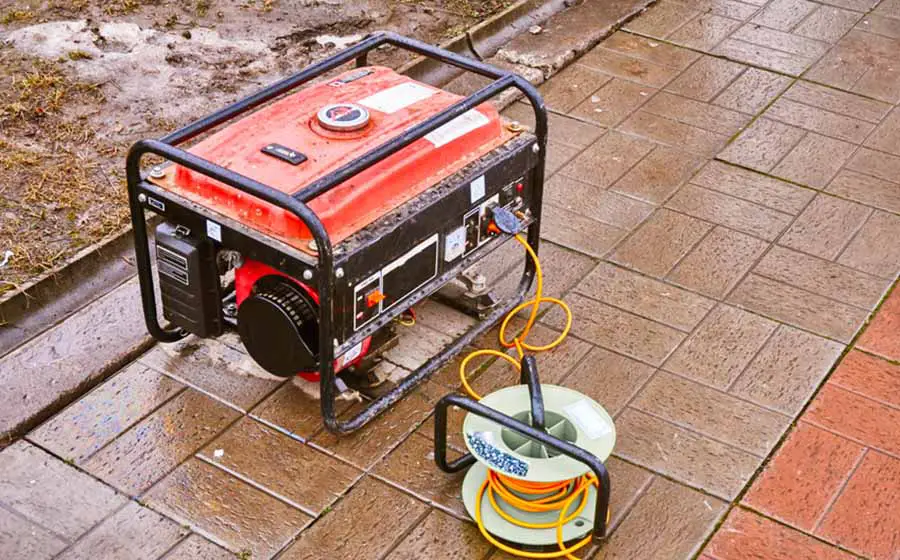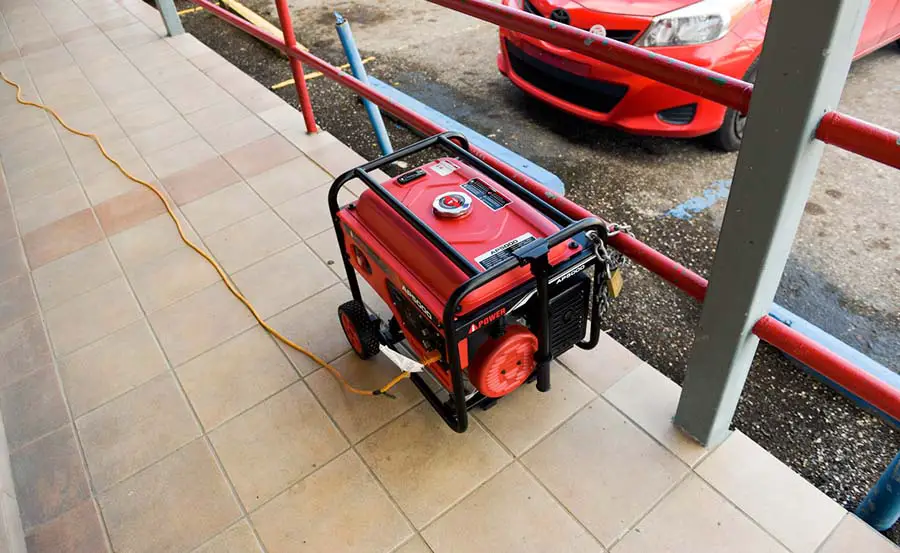
Having a portable generator is an asset and a lifesaver. National power grid outages leave us in the dark, and generators keep us in the light. Unfortunately for our heroes, we do not always look after them very well. We often leave them outside unprotected against the elements to fend for themselves. Did you know that getting your portable generator wet could potentially kill you?
Generally, it’s best to keep your generator as dry as possible. Water is an effective electricity conductor, so coming into contact with a wet generator while it’s turned on can electrocute you. Turn off your generator if it might get wet, and use a generator tent, shed, or cover to keep it dry.
Nobody gets excited when there is an electricity outage. Looking for candles in the dark is no fun and heading out to the generator in the rain or snow is unpleasant. And getting your wet hands on the damp generator is a recipe for disaster. To prevent electrocution, try a few of these first.
What Manufacturers About Getting Portable Generators Wet
Here is an extract from a Honda portable generator user manual:
“The generator produces enough electric power to cause serious shock or electrocution if misused.”
“Using a generator or appliance in wet conditions such as rain or snow, or near a pool or sprinkler system, or when your hands are wet, could result in electrocution. Keep the generator dry.“
“If the generator is stored outdoors, unprotected from the weather, check all the electrical components on the control panel before each use. Moisture or ice can cause a malfunction or short circuit in electrical components that could result in electrocution.”
Always heed the advice dished out by the manufacturer. They were the ones that built the machine and should know best.
What To Do When Your Portable Generator Gets Wet
We would all read the warning labels and user manuals in a perfect world when purchasing something new. This world is far from perfect, and so are we; reading takes time, and we usually know better. When it comes to wet portable generators, we should all read the warning label or potentially get the shock of our lives!
The first thing you do not do is touching it with your bare wet hands. The second thing you do is to allow it to dry completely. You can use a hair dryer or leaf blower to speed up this process. Ensure all outlets and electronic components are completely dry when you decide to test and use them again.
How To Prevent Your Portable Generator From Getting Wet

There are many ways to protect your generator from rain, snow, and water. Investing in the standard cover made for your generator could be pricey, and if your budget is tight, there are a few other options that would work just as well.
- Generator tents
- Storage sheds/containers
- Generator covers
Let’s take a more in-depth look at each of these options so you can make a more well-informed decision about which one is right for your situation.
1. Generator Tents
This is one of the most portable shelters available on the market. Generator tents attach to any portable generator and are easy to set up. You won’t need any additional tools when installing a tent. Included in the setup kits are clamping systems that self-attache to your portable generator.
These tents are usually cheaper and more convenient than stationary enclosures, plastic sheds, pop-up canopies, or expensive DIY structures. Setup should take you no longer than 10-15 minutes and detaches just as quickly.
Generator tents are designed to keep all electrical outlets dry, weathering hurricane winds, rain, and heavy snow from every angle. These tents do not block fresh air from coming in and allow for the generating system’s natural cooling, unlike some shed and canvas enclosures.
Generator tents usually have a large refueling door and allow access to change the oil and perform maintenance on your generator with the tent still attached. This option does not force you to remove the shelter at all, unlike some other structures. Should your generator need some tender loving care while it is running and raining, you may proceed to do just that.
Protecting your portable generator with a generator tent is seen by many as the best option to counter nature’s wrath!
2. Storage Sheds/Containers
This is not a portable option and is mostly used by people who store their generators in one place, like their backyard. A generator shed is the smaller version of a gardening shed. These sheds protect the generator from the elements of nature. However, manufacturers usually sell them as storage units only.
They are typically made out of waterproof resin or high-density polyethylene, all of which could be styled to look like wood. Usually, there is a little generator ramp attached to these sheds so that you can quickly move them in and out of their tiny house. By manufacturing them with these materials prevents peeling and cracking of the shed.
The downside to these enclosures is that they don’t usually allow for ample ventilation, making them dangerous to use when your generator is in the shed. By simply adding more ventilation vents to the shed, you can overcome this problem.
The good idea is to get an exhaust fan which will suck out the nasty fuel fumes and emissions. Buying a temperature detector will help alert you if it’s too hot in the shed or if the cooling fan is not working correctly.
If you prefer building your shed, be sure to incorporate the much-needed ventilation into your design. Soundproofing the shed from the start is ideal as it can become quite noisy when you run a generator in a shed. Look at the possibility of having an exhaust outlet; make sure it is not close to a window as you don’t want to die of carbon monoxide poisoning.
3. Generator Covers
Generator covers are an excellent option to use when the generator is running or sleeping. Setting up a cover for your generator will take a bit longer than other options.
- Attach the stainless-steel pipes to the top of your generator using simple cable ties to fasten them.
- Lower the cover on top of your generator’s frame, securing it with hook and loop strips.
- Lifting the lifting straps as per your generator’s design. This process should take you 20-30 minutes to complete.
What makes a cover an excellent option is that you only fit it once. The generator works with the cover, and you can refuel without taking the cover off first.
Good covers are normally made of three layers of material:
- Multigrade vinyl
- Synthetic(s)
- Tarpantine
These substances provide excellent protection against rain, snow, and wind. They also protect the generator against dirt and UV damage.
Before you purchase a cover for your generator, make sure to measure your machine. Be sure to add 2-4 inches to your measurement as you want your cover to fit with a little room to spare. The cover should cover the control panel, electric panel, all sensitive sensors, and everything besides the exhaust pipes and heat fans.
The best covers have a duality purpose:
- Access to all the operating parts while your generator is on (control panels and refueling space)
- Providing ample space for exhaust and heat exchange to occur.
Elevate your generator from the ground level by making a cement platform or using pallet wood or something similar. Your generator should never stand directly on the ground; try to keep it out of water’s reach.
Conclusion
So, we should all know by now that exposing a generator to the elements and touching it while it’s wet could lead to electrocution. If you ask me, that’s not a fun way to leave this earth. The golden rule to remember is: Never touch your generator with wet hands while it’s running uncovered in the rain!
The safest option to preserve and protect your generator and yourself is to invest in a cover. Buy a generator tent, generator shed, or generator cover. Any type will protect your generator from nature’s elements. Just be aware that choosing the shed option will probably require some modifications to improve the circulation inside the storage pace for you to use it while inside.
When constructing your DIY cover, ensure that you protect all the electrical panels and sensors from rain, snow, and wind. Remember not to constrict or cover the exhaust pipes and heat fans as this may cause a malfunction due to overheating. Elevating your generator so that it does not touch the ground is essential. Build or use a platform that will keep it out of the water.
Never forget the golden rule!
